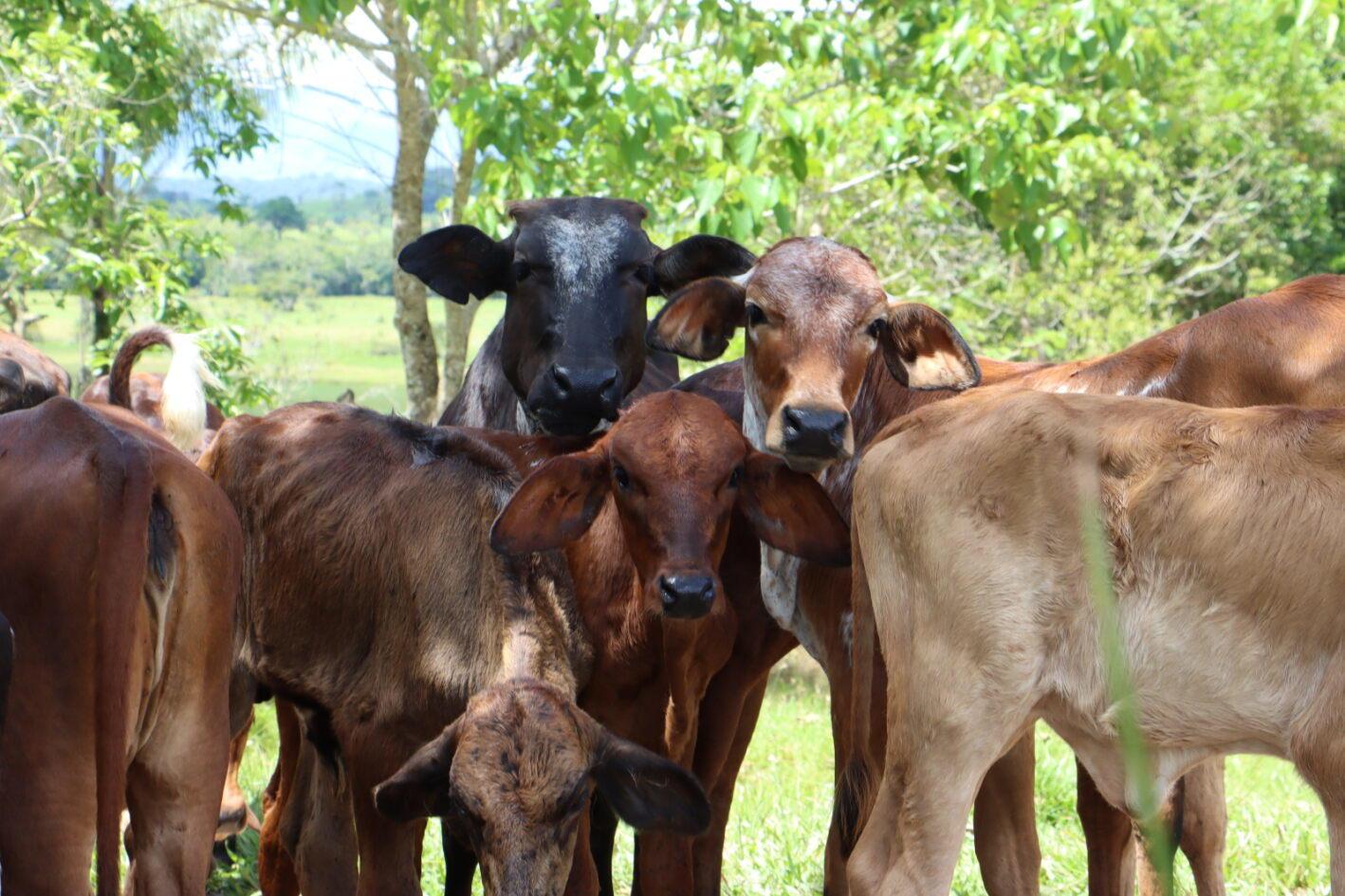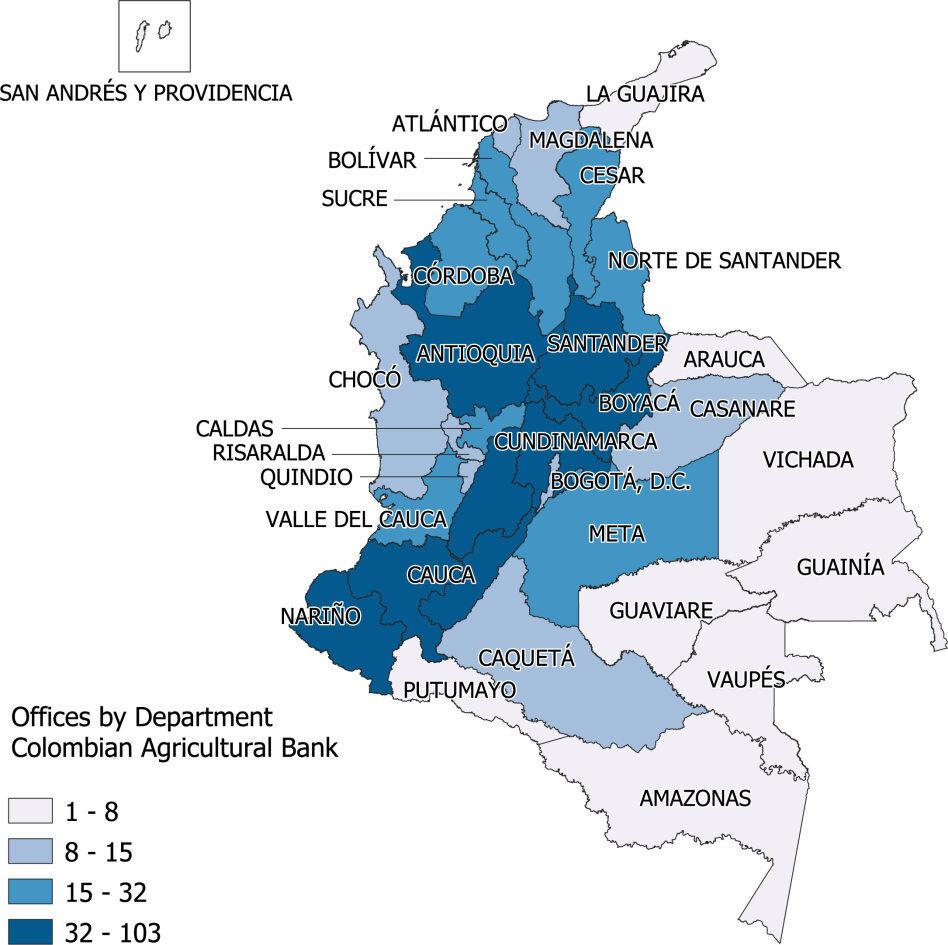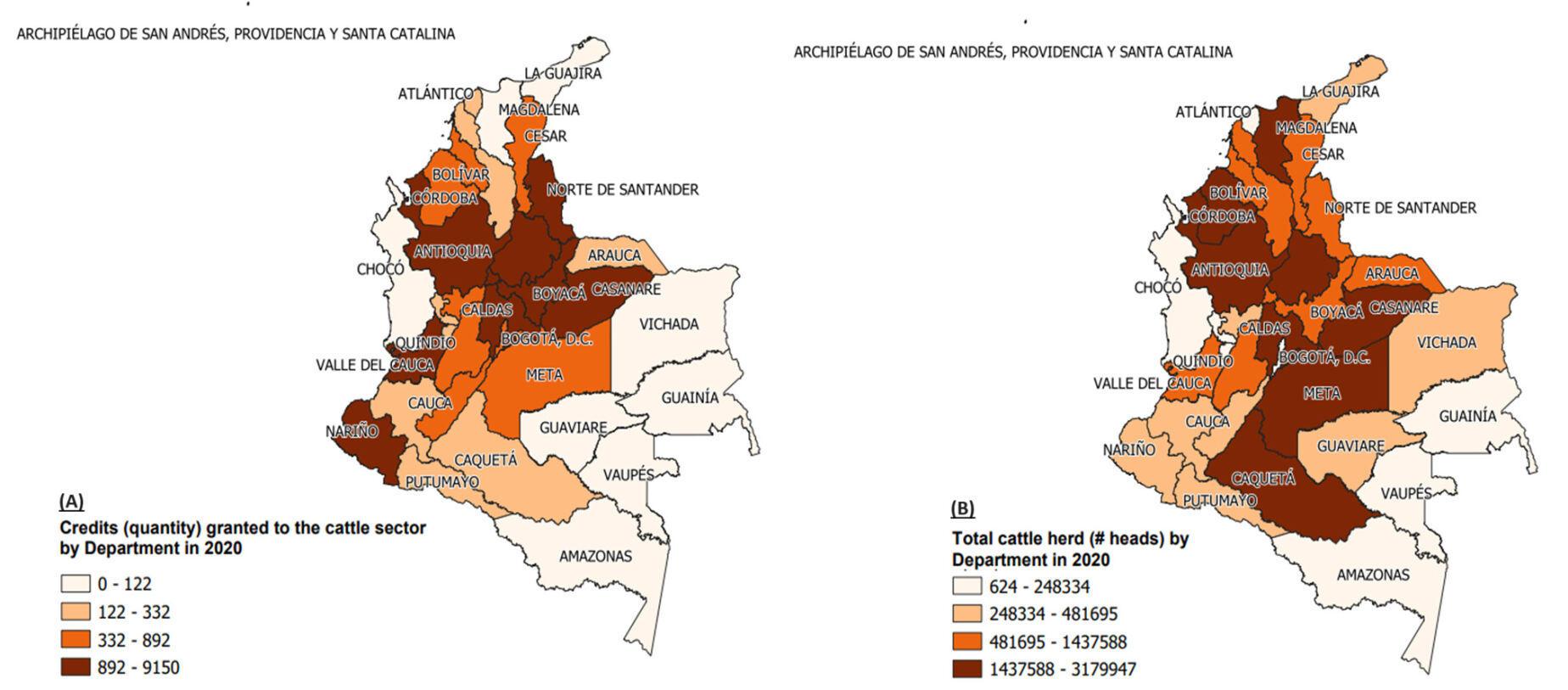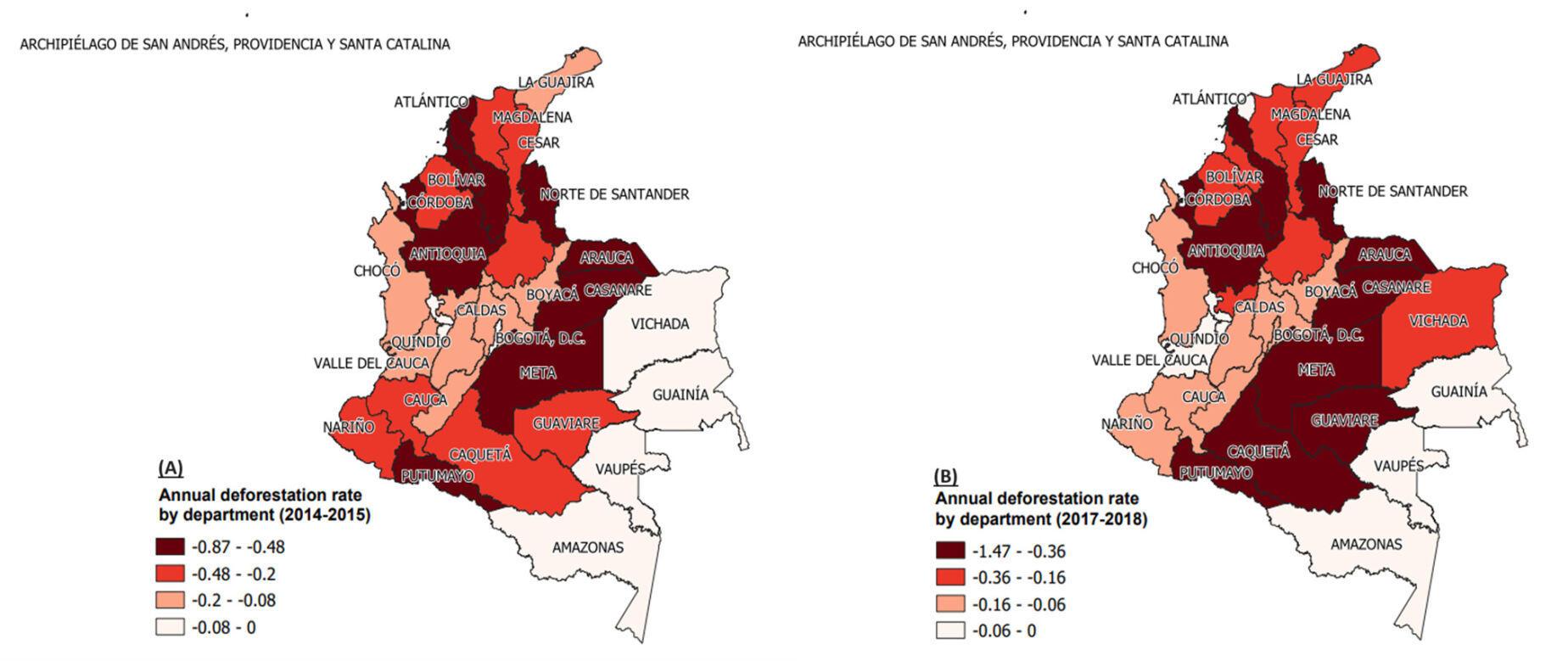Research Articles Agricultural credit as an engine of rural development: Challenges and opportunities in Colombia

For farming systems in in developing countries, access to credit is a crucial factor in driving innovation, optimizing resource distribution, and reducing inequalities. However, this landscape becomes complicated when considering other aspects such as environmental impacts, poverty alleviation, and the livelihoods of rural communities.
By Daniela Mejía and Stefan Burkart
Agricultural credit, used as a tool for rural development, comes with high transaction costs, information asymmetries, and high interest rates, making accessibility difficult in rural areas of countries like Colombia, where the agricultural sector is still underdeveloped. Despite efforts to mitigate these challenges, there are still considerable gaps in credit access in rural Colombia. An example of this is the distribution of branches of the Agrarian Bank of Colombia (Banco Agrario de Colombia), the official financial institution for promoting agricultural credit in the country. The figure below shows a contrasting distribution of branches between the more developed and urbanized areas of the country (i.e., in the Andes) compared to the more remote areas in the Amazon and Eastern Plains.

Distribution of branches of the Agrarian Bank of Colombia by department.
The study "The Impact of Agricultural Credit on the Cattle Inventory and Deforestation in Colombia: A Spatial Analysis" published in npj Climate Action, suggests a complex relationship between cattle production, credit distribution, and deforestation. This relationship highlights the importance of aligning these activities with the United Nations Sustainable Development Goals, i.e., those advocating for poverty eradication, promotion of sustainable economic growth, and environmental protection.
The results of the econometric analysis reveal significant, albeit sometimes contradictory, effects of credit access and land use on cattle herd size. While credits targeting cattle farming show a positive relationship with increased herd size, the total credit amounts show a negative relationship. For example, large producers account for only 1% of the total number of credit operations, but their share in the value of these operations is 54%.
On the other hand, when examining the relationship between the cattle herd size and deforestation, a negative association is found, suggesting that increases in the cattle inventory are linked to forest loss. However, other factors external to cattle farming, such as armed conflict, coca farming, and the COVID-19 pandemic, may have a greater influence on the deforestation rate.
In summary, the importance of coherent and uniform policies at the departmental level to improve credit access and effectively manage cattle farming is highlighted. Additionally, it is suggested to continue researching other external factors that may influence deforestation to develop more effective strategies for environmental conservation in Colombia.
Meet Stefan
Stefan Burkart
Senior ScientistRelated Content





